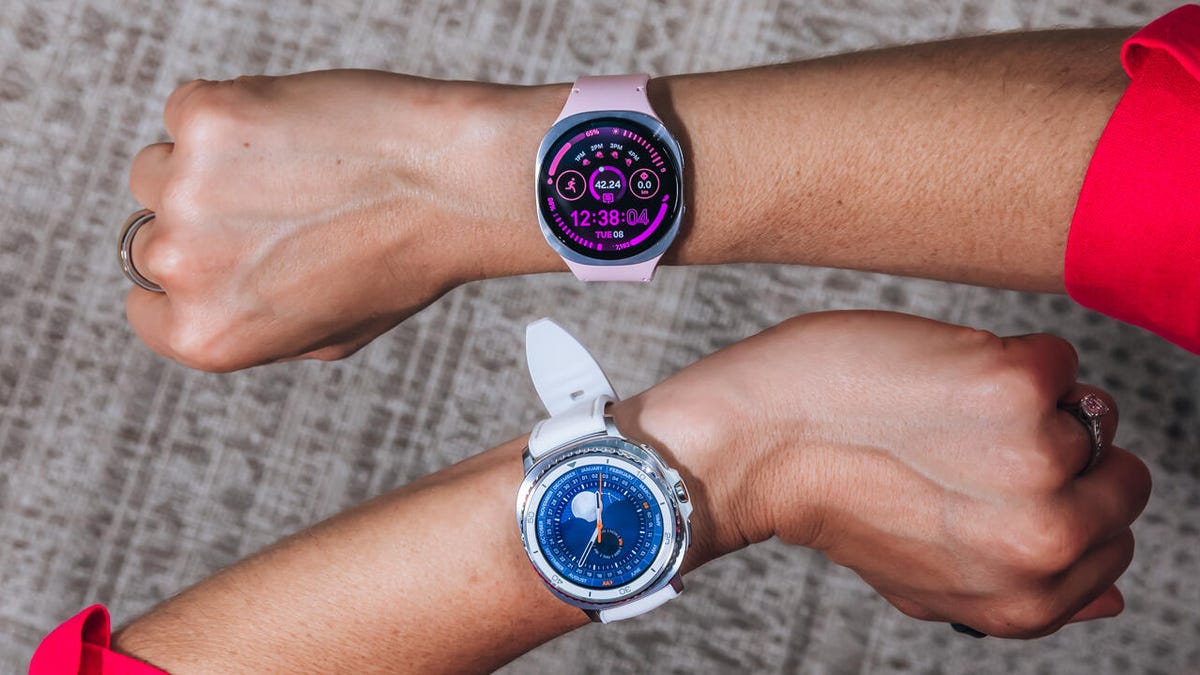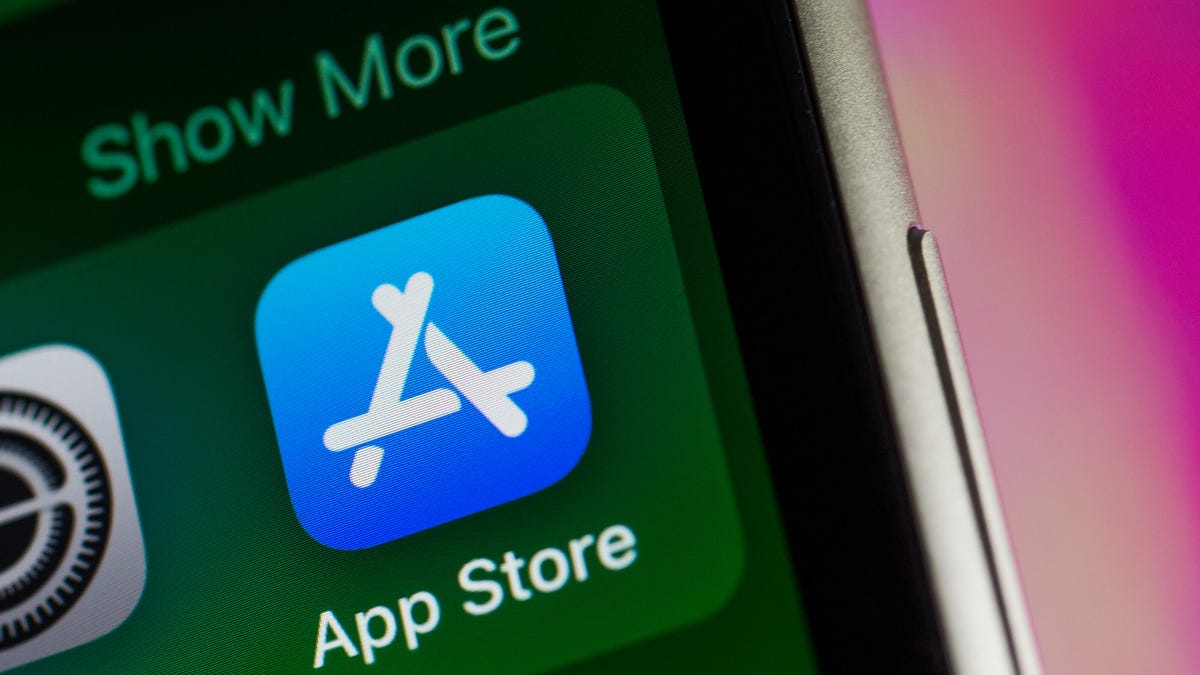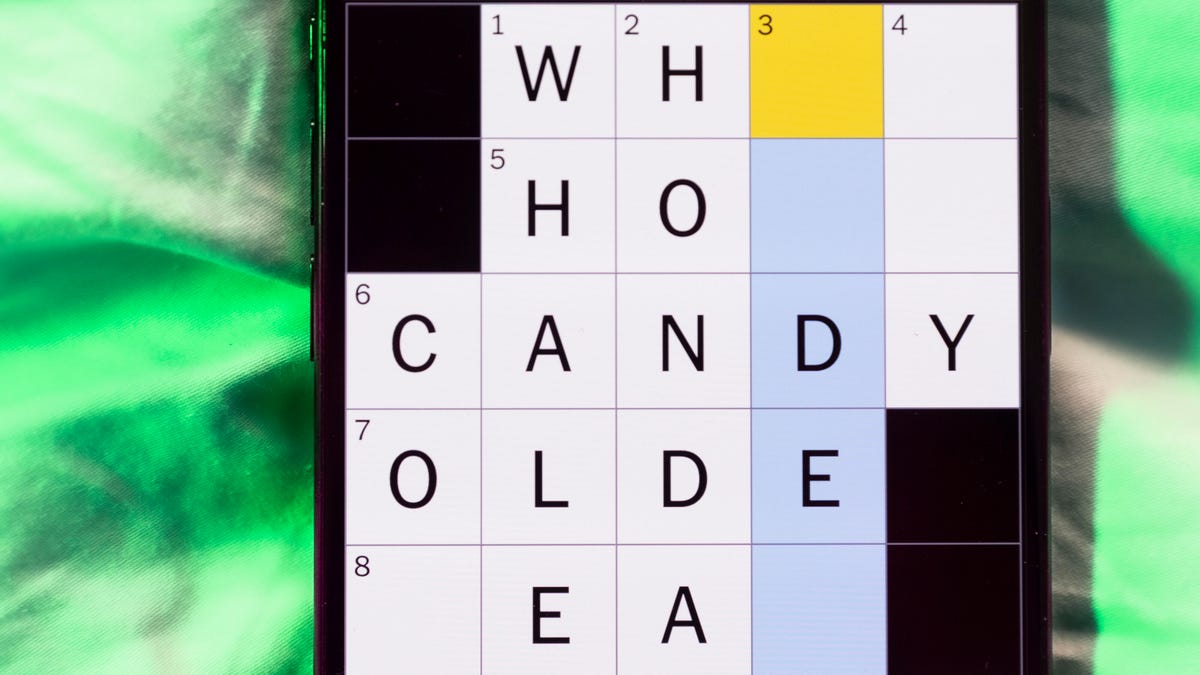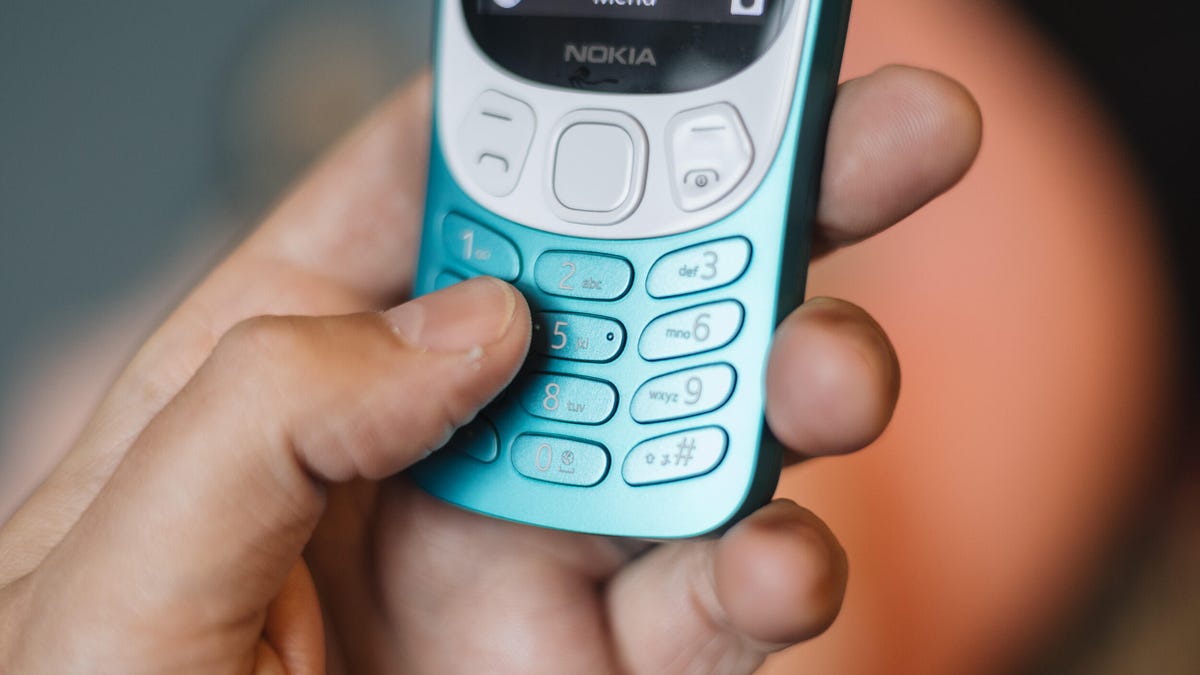Technologies
Samsung Brought Back My Favorite Feature for Its Galaxy Watch 8 and Watch 8 Classic
The company’s latest smartwatches look sharp, but the first-of-their-kind health tools could be what makes them most compelling.

While competitors release predictable updates to their smartwatches, Samsung isn’t afraid to surprise us (for better or worse) with design and feature changes each year. And with the Galaxy Watch 8 Classic in particular, announced at Samsung’s Galaxy Unpacked event, my favorite feature has made a welcome reappearance: the physical rotating bezel, a touch of romantic elegance that made me fall in love with Galaxy Watches in the first place. The Galaxy Watch 8 also has a new look and thinner frame, while the Galaxy Watch Ultra keeps the same functional, squared-off frame as before with a new Titanium blue color that will appeal to people who want a more rugged timepiece.
But it’s not just aesthetics that have changed in this year’s revisions. The company is also stepping things up when it comes to health tools, including several features I’ve never seen on a smartwatch, like noninvasive skin analysis and AI-powered coaching for sleep and running. The Galaxy Watch 8 and Watch 8 Classic also have a smarter voice assistant and are the first smartwatches with Google’s Gemini AI baked right inside, ready to handle complex tasks.
Pricing and availability
The Galaxy Watch 8 starts at $350 for the 40mm model and $380 for the 44mm one. The LTE versions are $50 more: $400 for the 40mm model and $430 for the 44mm watch.
The Galaxy Watch 8 Classic, with its rotating bezel and physical crown, comes in a single 46mm size and costs $500, or $550 for the LTE model.
The Titanium Blue version of the Galaxy Watch Ultra is $650, the same price as the original 2024 model. This version gets the same internal upgrades as the Watch 8 lineup, including a 64GB storage bump.
All models are available for preorder now with shipping starting July 25. If you reserve early from Samsung you can get $50 in Samsung credit; your wireless carrier may also have deals on the watches and Samsung’s just-announced phones.
Health and fitness features
Samsung continues to expand the Galaxy Watch’s role as a health and wellness tool, building on existing features like ECG, SpO₂ (shorthand for peripheral capillary oxygen saturation), sleep tracking and its AGEs Index, which reflects your metabolic aging process. The headliner is a new Antioxidant Index, which measures carotene (one type of antioxidant) levels in your skin with a simple five-second press of your thumb on the sensor (no needle needed). Since antioxidants help clear toxins from the body, knowing your levels can offer actionable steps for improving your health. The watch will rate your levels on a scale from low to high and then offer generic recommendations on the Samsung Health app on how you can improve your levels if they’re on the lower side.
It’s important to note that this metric isn’t clinically verified and isn’t meant to replace a medical-grade test. It’s designed to offer a baseline reading that may help you make real-time lifestyle adjustments, but it won’t provide the detailed or precise results you’d get from a traditional blood test.
There’s also a new metric called Vascular Load, which measures strain on your heart during sleep. These readings are translated into a low-to-high scale to help you understand how behaviors (like sodium or alcohol intake) may be contributing to long-term heart disease risk.
Sleep tracking gets a serious upgrade, too. A new Bedtime Guidance tool uses a three-day analysis of your circadian rhythm and sleep pressure (aka sleep debt) to recommend an ideal bedtime window. It factors in heart rate, HRV, skin temperature, and even environmental cues like room temperature or brightness (if you’ve got connected SmartThings devices). The goal: Improve your sleep quality, recovery and energy throughout the day.
The coaching isn’t just for sleep; the new Galaxy Watches are also debuting a Running Coach feature. It starts with a 12-minute running assessment that scores your fitness from level 0 (beginner) to level 10 (marathon-ready). From there, it builds a personalized four-to-six-week training plan tailored to your distance or performance goals.
Similar to Apple’s new Workout Buddy, Samsung’s Running Coach offers real-time, contextual feedback while you’re running, like pointing out a major milestone. But unlike Apple’s version, Samsung’s tool goes a step further by actually adapting your future training plans based on your progress.
Design
The two new Galaxy Watches take a page out of the Galaxy Watch Ultra’s playbook ditching the traditional circular watch face for a «cushion» design that has a round screen set inside a «squircle» frame (square with rounded edges). As someone who thought the Ultra looked too big and masculine for my wrist, I’m still not totally sold on the design shift. But I’m a sucker for that rotating bezel on the Classic (the Ultra’s is static), so I can’t help but love the look, even if it doesn’t feel like it was made for me.
The Classic also adopts the customizable quick-action button of the Ultra that also doubles as a crown wedges between the two navigation buttons.
Despite my preference for the sleeker, edgeless circular design of past Galaxy Watches, there may be some benefits to the new design, including a slimmer form factor. According to Samsung, the Galaxy Watch 8 is 11% slimmer and lighter than its predecessor. When trying it on, I was blown away by how light it felt on my wrist without the usual belly bump bulge of the body.
Pair that with a new band system, which reduces the gap between the watch and your wrist and you have a noticeably more comfortable fit. Thanks to the tighter sensor-to-skin contact, it’s also more accurate at capturing heart rate data. This is still subject to testing, but if it holds up, it may be a justified design trade-off.
The Galaxy Watch 8 comes in silver and graphite with an aluminum frame, while the Classic opts for a stainless steel finish in just silver. Size-wise, the regular Watch 8 comes in 40mm and 44mm options, while the Classic is only available in 46mm, which looks pretty large on my 6-inch (15cm) wrist and definitely leans more masculine. I can’t help but miss the days when Samsung offered more feminine options like rose gold or even just plain gold, though it’s been a while since those were part of the lineup.
Gemini on the watch
The new One UI 8 software brings a refreshed user experience that is easier to navigate. Notifications are separated by app and instant access to your six most-used apps. The Watches also takes a page from the Galaxy phone with a new «Now bar» at the bottom of the screen for quick access to active apps like timers or media controls.
But the most important software update is the addition of Gemini AI. The new Galaxy Watches are the first with Google’s AI assistant built-in, bringing more complex commands and contextual understanding to your wrist. You can ask it to check your most recent running pace, start a five-mile run and launch your workout playlist simultaneously, set a timer to boil pasta based on a recipe in your notes, adjust the font size on the watch, or have it draft a text letting a friend know you’re running late.
Since Gemini requires an internet connection to work, you’ll need to have your phone paired nearby or use an LTE version of the watch.
Battery and storage
Let’s set expectations: Just because the Galaxy Watch 8 looks like the Ultra doesn’t mean it matches the Ultra’s three-day battery life. But there’s still good news to share.
Samsung says the Watch 8 has an 8% larger battery than the Watch 7: 325 mAh vs. 300 mAh (for the 40mm), and 435 mAh vs. 425 mAh (for the 44mm). The Classic tops out at 445 mAh, which is still well below the Ultra’s 590 mAh battery. How much that translates into real-world use remains to be seen, but any boost is welcome, especially paired with the efficiency gains from the new Wear OS 6 update.
Storage also doubles across the board, with 64GB now standard (up from 32GB), including a new Titanium Blue version of the Ultra.
This is just a first look based on hands-on time. We’ll find out if these features live up to the hype when put to the test in our full review, coming soon.
Technologies
Judge Blocks Texas App Store Age-Check Law
A preliminary injunction found the Texas law, set to begin Jan. 1, is «more likely than not unconstitutional.»

A new Texas state law set to take effect on Jan. 1 would have required app stores to implement age verification processes. But the law has been put on hold, at least temporarily, by a federal court judge.
As reported by the Texas Tribune, Senate Bill 2420, also known as the Texas App Store Accountability Act, is the subject of a temporary injunction issued by US District Judge Robert Pitman.
Pitman said in his decision that the law as written is broad, vague and «more likely than not unconstitutional.» However, he also wrote the court «recognizes the importance of ongoing efforts to better safeguard children when they are on their devices.»
Don’t miss any of our unbiased tech content and lab-based reviews. Add CNET as a preferred Google source.
The Texas law, signed into law by Governor Greg Abbott in May, requires app store operators — including Apple, Google, Nintendo, Steam and more — to build age verification processes for the storefronts and to only allow downloads to minors who obtain parental consent. The injunction is a ruling in an October lawsuit filed by the Computer & Communication Industry Association.
CCIA senior vice president Stephanie Joyce said in a statement, «This Order stops the Texas App Store Accountability Act from taking effect in order to preserve the First Amendment rights of app stores, app developers, parents, and younger internet users. It also protects parents’ inviolate right to use their own judgment in safeguarding their children online using the myriad tools our members provide.»
Other individuals and the advocacy group Students Engaged in Advancing Texas also filed suits over the law, the Texas Tribune reported.
App Store Accountability Act
The bill author, State Senator Angela Paxton, said the bill was meant to give parents «common sense tools to protect their kids and to survive court challenges by those who may have lesser priorities.»
The language of Texas Senate Bill 2420 does not only include mobile app stores from Apple or Google, but any «website, software application, or other electronic service that distributes software applications from the owner or developer of a software application to the user of a mobile device.»
By that definition, websites with links to browser games or mobile game consoles with download options would fall under the Texas law as written. The law also defines mobile devices as including phones and tablets, as well as any other handheld device capable of transmitting or storing information wirelessly.
The parental consent aspect of the law requires those under 18 to have an app store account affiliated with a parent or guardian to purchase or download applications.
Age verification elsewhere
In an effort to keep adult materials out of reach of minors and to protect children from potentially harmful content and interactions, tech companies have been compelled by law or through legal action to verify the age of users.
Roblox, which has a huge audience of minors, began rolling out stricter age verification after investigations and lawsuits hurt its reputation as a safe gaming space. Australia is perhaps the most large-scale example of a government restricting access to online content. In December, Australia began restricting social media access to those 16 and older. Reddit recently challenged that law.
In the US, age verification laws have primarily targeted adult sites. Texas already has a law on the books that requires adult sites to age-block their content. The Supreme Court upheld that law in a June ruling. The UK has also enacted age restriction rules for adult sites as have other US states.
Technologies
Today’s NYT Mini Crossword Answers for Thursday, Dec. 25
Here are the answers for The New York Times Mini Crossword for Dec. 25.

Looking for the most recent Mini Crossword answer? Click here for today’s Mini Crossword hints, as well as our daily answers and hints for The New York Times Wordle, Strands, Connections and Connections: Sports Edition puzzles.
Need some help with today’s Mini Crossword? Of course, there’s a very Christmassy clue involved. And once you solve the entire puzzle, look at the letters used in all the answers and see what they have in common. (5-Across will tell you!) Read on for all the answers. And if you could use some hints and guidance for daily solving, check out our Mini Crossword tips.
If you’re looking for today’s Wordle, Connections, Connections: Sports Edition and Strands answers, you can visit CNET’s NYT puzzle hints page.
Read more: Tips and Tricks for Solving The New York Times Mini Crossword
Let’s get to those Mini Crossword clues and answers.
Mini across clues and answers
1A clue: ___ King Cole, singer with the album «The Magic of Christmas»
Answer: NAT
4A clue: Body drawings, informally
Answer: TATS
5A clue: Letters to ___ (what this Mini was made with)
Answer: SANTA
6A clue: Huge fan, in slang
Answer: STAN
7A clue: «Illmatic» rapper
Answer: NAS
Mini down clues and answers
1D clue: Grandmothers, by another name
Answer: NANAS
2D clue: Abbr. before a name on a memo
Answer: ATTN
3D clue: Org. with long lines around the holidays
Answer: TSA
4D clue: «See ya later!»
Answer: TATA
5D clue: Govt.-issued ID
Answer: SSN
Don’t miss any of our unbiased tech content and lab-based reviews. Add CNET as a preferred Google source.
Technologies
Don’t Let a Border Agent Ruin Your Holiday Trip. Travel With a Burner Phone
Yes, you should leave your main phone at home and take a cheap burner this winter.

Prepare for a whole new level of border-crossing anxiety this holiday season: the high-probability of a phone search. New figures from US Customs and Border Protection say agents aren’t just glancing at your lock screen anymore — they are aggressively ramping up device inspections, even for citizens coming home. We aren’t just talking about a quick scroll through your photos, either. Agents are increasingly using forensic tools to clone and analyze everything on your device.
The stats are genuinely alarming. In just a three-month window this year, nearly 15,000 devices were flagged for searches, with over a thousand subjected to deep-dive data copying. If you’re traveling with your primary phone, you are essentially carrying your entire digital existence into a legal gray zone where privacy is optional.
The smartest defensive play is remarkably low-tech: the burner phone. By traveling with a secondary, stripped-down device, you ensure your private data stays safe at home while you stay connected abroad. But privacy isn’t the only perk. Moving to a «dumb» phone is the ultimate digital detox, helping you escape the notification trap that usually ruins a vacation.
Even figures like Conan O’Brien have ditched the smartphone to cut through the noise. Whether you’re dodging invasive border searches or just trying to enjoy your trip without being glued to a screen, a burner might be the best travel investment you make this year.
Read more: Best Prepaid Phone of 2025
Although carriers have offered prepaid phones since the ’90s, «burner phones» or «burners» became popular in the 2000s following the celebrated HBO series The Wire, where they helped characters avoid getting caught by the police. Although often portrayed in that light, burners aren’t only used by criminals; they’re also used anyone concerned with surveillance or privacy infringement.
What is a burner phone, and how does it work? Here’s everything you need to know about burners and how to get one.
Don’t miss any of our unbiased tech content and lab-based reviews. Add CNET as a preferred Google source.
What is a burner phone?
A burner phone is a cheap prepaid phone with no commitments. It comes with a set number of prepaid call minutes, text messages or data, and it’s designed to be disposed of after use.
Burner phones are typically used when you need a phone quickly, without intentions of long-term use. They’re contract-free, and you can grab them off the counter. They’re called burner phones because you can «burn» them (trash them) after use, and the phone can’t be traced back to you, which makes them appealing to criminals. Of course, those committed to illicit activities often do more than just throw these phones in the trash, and often completely obliterate the SIM cards and other materials by smashing them with a hammer or melting them away.
Burners are different from getting a regular, contract-bound cellphone plan that requires your information to be on file.
Why should you use a burner phone?
Burner phones are an easy way to avoid cellphone contracts or spam that you get on your primary phone number. Burners aren’t linked to your identity, so you can avoid being tracked down or contacted.
You don’t have to dispose of a burner phone after use. You can add more minutes and continue using it. Burner phones can still function as regular phones, minus the hassle of a contract.
You can also get a burner phone as a secondary phone for a specific purpose, like having a spare phone number for two-factor authentication texts, for business or to avoid roaming charges while traveling. Burner phones are often used by anyone concerned with privacy.
Read more: The Data Privacy Tips Digital Security Experts Wish You Knew
Burner phones, prepaid phones, smartphones and burner SIMs: What’s the difference?
Burner phones are cheap phones with simple designs that lack the bells and whistles of a smartphone. Because they’re designed to be disposable, you only get the essentials, as seen by the most common version, the flip phone.
All burner phones are prepaid phones, but not all prepaid phones are burners. What sets a burner apart is that you won’t have to give away any personal information to get one, and it won’t be traceable back to you. Again, a burner phone is cheap enough to be destroyed after use.
Prepaid smartphones are generally low-end models. You can use any unlocked smartphone with prepaid SIM cards, essentially making it a prepaid phone.
If you want a burner, you don’t necessarily have to buy a new phone. You can get a burner SIM and use it with an existing phone. Burner SIMs are prepaid SIMs you can get without a contract or giving away personal information.
Where can you buy a burner phone?
Burner phones are available at all major retail outlets, including Best Buy, Target and Walmart. They’re also often available at convenience stores like 7-Eleven, local supermarkets, gas stations and retail phone outlets like Cricket and Metro.
You can get a burner phone with cash, and it should cost between $10 and $50, although it may cost more if you get more minutes and data. If you’re getting a burner phone specifically to avoid having the phone traced back to you, it makes sense to pay with cash instead of a credit card.
If you just want a prepaid secondary phone, you can use a credit card. Just keep in mind that credit cards leave a trail that leads back to you.
There are also many apps that let you get secondary phone numbers, including Google Fi and the Burner app. However, these aren’t burners necessarily because the providers typically have at least some of your personal information. Additionally, apps like Google Talk require a phone number that’s already in use for you to choose a number with the service.
If you’re just looking to get a solid prepaid phone without anonymity, check out our full guide for the best prepaid phone plans available. We also have a guide for the best cheap phone plans.
-

 Technologies3 года ago
Technologies3 года agoTech Companies Need to Be Held Accountable for Security, Experts Say
-

 Technologies3 года ago
Technologies3 года agoBest Handheld Game Console in 2023
-

 Technologies3 года ago
Technologies3 года agoTighten Up Your VR Game With the Best Head Straps for Quest 2
-

 Technologies4 года ago
Technologies4 года agoBlack Friday 2021: The best deals on TVs, headphones, kitchenware, and more
-

 Technologies4 года ago
Technologies4 года agoVerum, Wickr and Threema: next generation secured messengers
-

 Technologies4 года ago
Technologies4 года agoGoogle to require vaccinations as Silicon Valley rethinks return-to-office policies
-

 Technologies4 года ago
Technologies4 года agoOlivia Harlan Dekker for Verum Messenger
-

 Technologies4 года ago
Technologies4 года agoiPhone 13 event: How to watch Apple’s big announcement tomorrow
